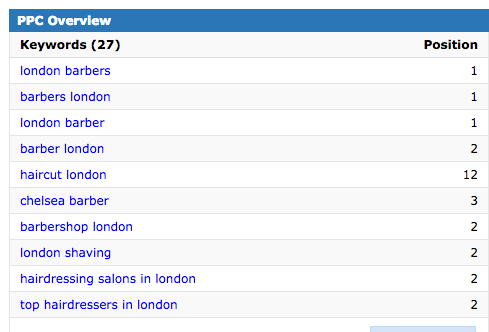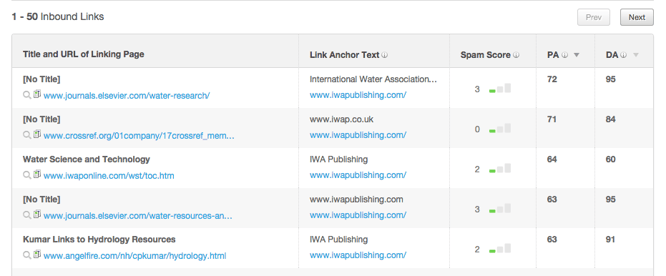4 Ways To Learn From Your Competitors’ SEO (And Then Beat Them)
All business strategies need an idea of the marketplace, what is already available to consumers and how your business fits into all of this.
SEO strategies are no different: small businesses need to be aware of what it is their competitors are doing online to bring in customers and what that means for them.
After all, if your competitors have an excellent strategy which puts them ahead of you on Google, they could be stealing all of your potential customers!
Exclusive Bonus: Click here to download the bonus step you can do to learn from your competitors’ SEO!
This post will highlight how to analyze your competition and get an idea of their SEO strategies, before turning those strategies to your advantage and leaving competitors in the dust.
[Tweet “4 Ways to Learn From Your Competitors’ #SEO (And Then Beat Them)”]

1. Identify Your Competitors
It may seem obvious that to beat your competition, you need to know who they are. However, it may take a little more consideration than simply naming two or three similar businesses in your town.
Remember that we are looking at your competitors’ SEO, so to put names to your competitors more accurately we must turn to the search engines, and to the search terms that you are targeting.
Try searching for the terms and keywords that you’d like to rank highly for and make a note of the names that appear higher than yours. Make sure you pick battles that you can win: as we explained in when we tackled competing with big brands, it is not worth your time or effort to target general search terms that are dominated by big national and international companies. Instead, choose long tail search terms that are populated by smaller, local businesses.
Once you have a set of names who are fighting for the same SEO spots as you, we can begin learning from them—and beating them.
2. Visit Their Websites
We wouldn’t be able to learn much from a competitor’s SEO without actually visiting their site. Spend some time checking out the sites of each of the businesses you wrote down.
Think about the following as you look around:
- Professionalism—how ‘clean’ does the website and its branding look?
- Usability—is the site easy and comprehensive to navigate? Can you find things easily?
- Text—how are their URLs constructed? How well does their text read?
If you notice anything that works particularly well on these sites, consider how you can adapt them for your own website. Don’t plagiarize any text or images, but if you see a particular layout or navigation feature that you think works well, it may be that your website would benefit from integrating something similar. Tailor it to fit your brand identity and make it work for you.
3. Analyze Their Keywords
One of the most essential parts of trawling through your competitors’ websites is identifying the keywords that they’re using and how they’re using them.
There are a number of tools online that you can use to identify the keywords your competitors are targeting, including Semrush, KeywordSpy and Webconfs. Through this, you may discover some keyword routes that you had not thought of and should be targeting. It may even give you some ideas for keywords that none of your competitors are targeting and slip under the radar that way.
If you gain some ideas for keywords, make sure you act on this information and build them into your website through your on-site SEO. The faster you act on this information, the quicker you will begin to see results. Understanding your competitors’ keywords is also useful information to have before building a PPC advertising campaign, as it means you have the best chance of targetting the correct people.

Analysis may provide some insight into keywords that you should build into your site
4. See Who’s Linking To Them
Other tools, such as Moz’s Open Site Explorer will analyze websites and show where else on the internet they are receiving links. As we know, links are one of the most valuable commodities when it comes to SEO, so it’s good to understand how you might gain these. Run your competitors’ sites through these tools and look at the results.

Using tools to see your competitors’ backlinks can provide some potential opportunities for gaining links of your own.
Follow some of these linking pages to see where the links are coming from. There may be local blogs, industry pages or other sites that you can tap into and gain some of your own links. Consider how your site will be relevant to the linking page and get in contact to introduce yourself, possibly suggesting a guest blog post or discount in return for a review.
Exclusive Bonus: Click here to download the bonus step you can do to learn from your competitors’ SEO!
Conclusion
Whether your business is just starting out, is a little behind on SEO strategy, or is already ahead of the game, keeping an eye on how your competitors are working will always prove to be useful.
Make sure that you monitor your competitors’ sites as part of your SEO strategy, as well as deeper aspects such as their keywords and backlinks. This will make sure that your business is not missing out on any valuable strategies that would benefit it greatly.
It’s also worth regularly going through this process from the beginning, in case any new players appear on the scene and race ahead with new ideas.
How do you keep track of your competitors’ movements in order to benefit your own strategies? Let us know in the comments!




